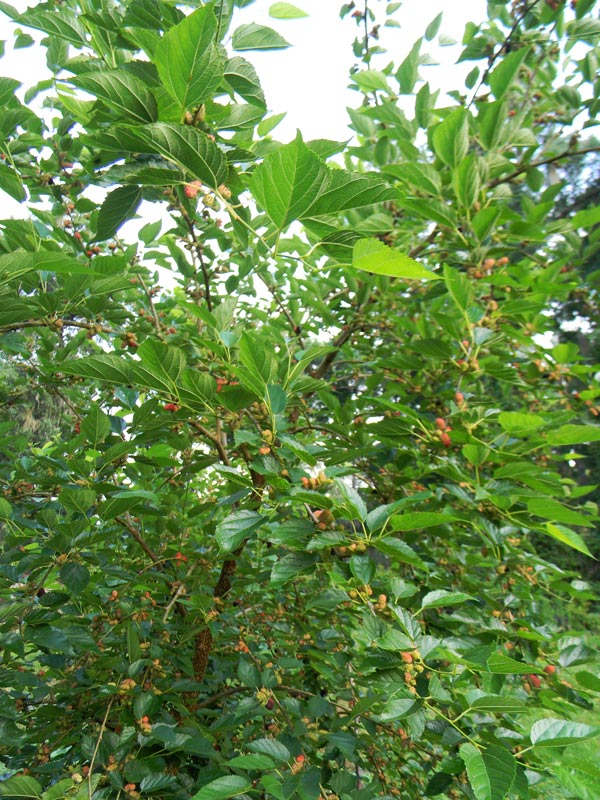Trees are a gift from God. They shelter, feed and warm us. Our books and hand tools are made from them. They provide us with oxygen, cool us in the summer and break the freezing winds of winter.
I recently posted on why you should plant a woodlot. Today I’m going to give you more info on 18 of my favorite trees so you can start gathering what you need to create an epic stand of woods.
Ready? Let’s go!
1. Hawthorn
Hawthorns are small trees or shrubs in the rose family. They produce edible fruit and will bring in plenty of game. They also, apparently, are magic. Though they’re not particularly useful for lumber or fuel, their edibility and small size makes them a good tree to tuck in here and there. Hawthorns are a large genus… there’s bound to be a family member in your area.
2. Black Walnut
As well as being one of the most valuable timber species in North America, black walnuts also produce an abundance of edible nuts. Not all trees can stand to grow near them, however, as black walnut roots produce a growth-dampening toxin known as jugalone. If you find walnuts in the fall, husk them, let them dry out a little, then bury them in damp soil and put them in the fridge until spring. Or just plant them in place and let winter do it for you. In the spring, they’ll start growing (provided the squirrels didn’t steal them).
2. Pecan
Pecan nuts are valuable and the timber is excellent. They’re also a native North American tree. Some types can grow all the way from Florida to Canada. Plus, pecan pie.
3. Hickory
Hickories are an excellent hardwood for tools. It’s also a wonderful cooking fuel, especially for smokehouses. Bonus: the nuts of most hickories are edible, though not all of them are worth the effort.
4. Chestnut
Chestnuts used to be one of the most common and useful trees in the United States before the horrible Chestnut Blight knocked out almost every hint of the native population. The wood is excellent for furniture… if you can find it. Fortunately, there are multiple organizations seeking to restore this majestic tree to North America. For large and tasty nut production, the Dunstan type is hard to beat. Otherwise, smaller Chinese trees are blight-resistant and will at least feed the livestock.
5. Persimmon
I can’t tell you how much I love these trees. The wood is beautiful and super-hard, plus female trees bear delicious and abundant crops of tasty fruit. American persimmon trees can be tucked in between other species, though they prefer more sun.
6. Sugar Maple
Maples produce an abundance of fast-decomposing leaves for your compost pile… and that’s the least of their talents. They also produce excellent wood and can be tapped for syrup.
7. Crabapple
Another small tree, crabapples are just wild forms of our domesticated apple trees. If you have them in your woodlot, they’ll feed the animals and provide you with useful fruit. They’ll also pollinate your other apple trees. If you want to get fancy, crabapples also make excellent root stocks for improved apple varieties. Graft away!
8. Osage Orange
This is a strange and thorny tree with disgusting bumpy green inedible fruit. It’s also a great tree for crafting bows, plus it makes a formidable hedgerow when planted closely. The wood is wicked hard and very rot-resistant.
9. Hackberry
Hackberry trees feed wildlife and produce good wood for furniture and plywood. They also grow quickly and can handle urban environments. Remember that if you decide to build your woodlot on the gutted remains of a burnt gas station.
(CLICK HERE TO SEE THE REST OF THE LIST!)




5 comments
If you plant Hickory you're planting it for your grandchildren unless you happen to be 20 years old you will more than likely not see any benefit from a freshly planted Hickory tree. Even after 30 years of growth they will barely be out of the sapling stage with maybe 5 inch trunks at best. Great trees but they grow so slow they are best left to their own devices.
That must depend on type. Just the other day a couple told me they had a hickory they planted a few years ago that was towering overhead.
I've read where azarole is good. It's a small European hawthorn with edible orange fruit. Grows to 8 feet tall. Is self-fertile.
Nice! Thank you.
If you're into stacking functions and levels, there are a bunch of smaller native trees that attract pollinators and feed wildlife and are also medicinal like toothache tree/Hercules' Club (Zanthoxylum clava-herculis), dogwood (Cornus florida), devil's walking stick (Aralia spinosa), and witch hazel (Hamamelis virginiana).
Comments are closed.